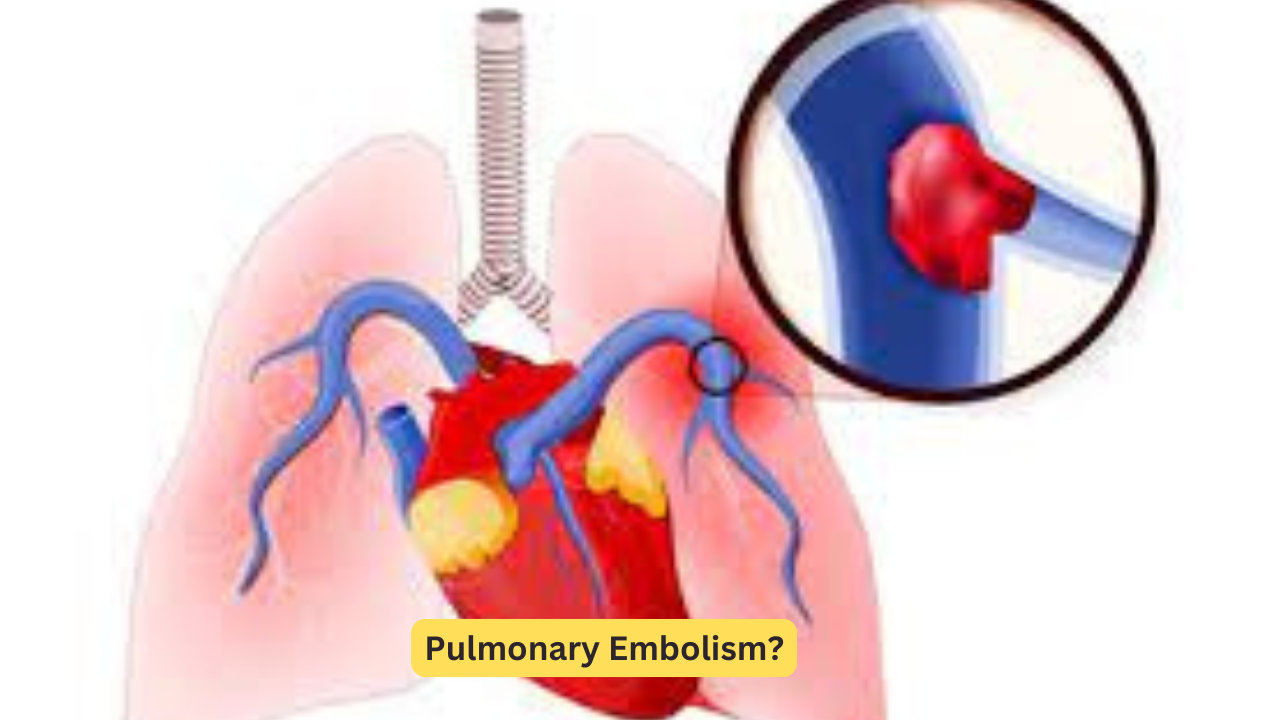Pulmonary Embolism?

Pulmonary Embolism (PE) is a serious medical condition that demands immediate attention. It occurs when a blood clot blocks one of the pulmonary arteries in the lungs. This blockage prevents blood from reaching the lung tissue, leading to severe complications and can even be life-threatening. In this detailed guide, we aim to provide a thorough understanding of pulmonary embolism, its causes, symptoms, diagnostic processes, and treatment options.
What is Pulmonary Embolism?
Pulmonary embolism is a condition where a blood clot—usually originating from the deep veins of the legs—travels through the bloodstream and lodges in a pulmonary artery. This situation is commonly a consequence of deep vein thrombosis (DVT), where clots form in the deep veins of the legs or other parts of the body. When these clots break loose and travel to the lungs, they cause a blockage in the pulmonary arteries.
Causes of Pulmonary Embolism
Several factors contribute to the formation of blood clots that lead to pulmonary embolism. The most common causes include:
Immobility
Extended periods of inactivity, such as long flights or bed rest, can slow down blood circulation, increasing the risk of clot formation. The lack of movement in the legs can lead to stagnation of blood, a primary factor in clot development.
Surgery
Particularly, surgeries involving the pelvis or legs can lead to blood clot formation. This risk is due to the injury to veins during the procedure, which may initiate the clotting process. Postoperative immobility further amplifies the risk.
Medical Conditions
Certain conditions like cancer, heart disease, and genetic disorders can make blood more prone to clotting. These conditions often alter the clotting mechanism, leading to hypercoagulability, a state where the blood clots more easily than normal.
Hormonal Factors
Pregnancy, birth control pills, and hormone replacement therapy can increase the risk of developing blood clots. These hormonal changes can affect the clotting process, leading to a higher likelihood of clot formation.
Symptoms of Pulmonary Embolism
The symptoms of pulmonary embolism can vary widely depending on the size of the clot and its location in the lung. Common symptoms include:
Shortness of Breath
This symptom often comes on suddenly and worsens with exertion. Breathing becomes difficult as the lung tissue fails to receive adequate blood flow.
Chest Pain
This pain can be sharp, resembling that of a heart attack. The pain typically worsens when you breathe deeply, cough, or bend over.
Cough
A persistent cough may produce bloody or blood-streaked sputum. This symptom is indicative of lung tissue damage caused by the blockage.
Leg Pain or Swelling
This usually occurs in the calf and is a sign of deep vein thrombosis, the most common cause of pulmonary embolism. Swelling and tenderness in the leg may be observed.
Rapid or Irregular Heartbeat
The body’s response to low oxygen levels in the blood can lead to tachycardia, or a rapid heart rate. This is a compensatory mechanism to ensure that enough oxygen-rich blood circulates throughout the body.
Diagnosis of Pulmonary Embolism
Accurate diagnosis of pulmonary embolism is critical to preventing complications. Physicians use a variety of tests to diagnose PE, including:
D-dimer Blood Test
This test measures the level of a substance released when a blood clot breaks up. Elevated levels of D-dimer suggest the presence of an abnormal blood clot, including pulmonary embolism.
CT Pulmonary Angiography
This is the most common and effective test for detecting PE. It involves injecting a contrast dye into the veins and taking detailed images of the blood vessels in the lungs to identify blockages.
Ultrasound
Used primarily to detect deep vein thrombosis in the legs, ultrasound helps identify the source of the embolism. It is a non-invasive method that can confirm the presence of clots in the deep veins.
Ventilation-Perfusion (V/Q) Scan
This test uses radioactive material to examine the flow of air and blood in the lungs. It helps detect mismatches in airflow and blood flow that indicate the presence of a PE.
Treatment of Pulmonary Embolism
Once diagnosed, treatment for pulmonary embolism must begin immediately to prevent serious complications. Treatment options include:
Anticoagulant Medications
Blood thinners, such as warfarin, heparin, and newer medications like rivaroxaban and apixaban, prevent new clots from forming and existing ones from growing larger. These medications are the first line of treatment.
Thrombolytic Therapy
In severe cases, doctors may use clot-busting drugs to dissolve the clot quickly. However, these drugs are usually reserved for life-threatening situations due to the risk of significant bleeding.
Surgical Procedures
In rare cases, surgery may be necessary to remove the clot from the lung or to place a filter in the large central vein (vena cava) to prevent clots from traveling to the lungs. This is typically a last resort when other treatments fail.
Lifestyle Changes and Ongoing Care
Patients recovering from pulmonary embolism may need to make lifestyle changes such as increasing physical activity, quitting smoking, and wearing compression stockings to prevent future clots. These changes help in the long-term management of the condition.
Complications Associated with Pulmonary Embolism
Pulmonary embolism can lead to serious, long-term health problems if not treated promptly. Some of the potential complications include:
Pulmonary Hypertension
A condition where the blood pressure in the lungs’ arteries is elevated. If untreated, this can lead to heart failure due to the increased strain on the heart.
Chronic Thromboembolic Pulmonary Hypertension (CTEPH)
This is a rare form of pulmonary hypertension caused by recurrent blood clots in the lungs. It is a chronic condition that requires specialized treatment.
Heart Problems
PE can strain the heart, especially the right side, which pumps blood to the lungs. This strain can lead to heart failure over time, making it a critical condition to manage properly.
Preventing Pulmonary Embolism
Preventing pulmonary embolism involves reducing the risk of blood clots forming in the veins. Some prevention strategies include:
Stay Active
Regular physical activity is crucial, especially for people at high risk. Even simple leg exercises during long flights or periods of immobility can help prevent clot formation.
Compression Stockings
These can help improve blood flow in the legs and reduce the risk of clot formation. They are especially useful for individuals who are immobile for extended periods.
Manage Risk Factors
If you have conditions that increase your risk of blood clots, such as heart disease or cancer, work with your doctor to manage these conditions effectively.
Medications
For people at high risk, such as those who have had previous clots, doctors may prescribe anticoagulants as a preventive measure. These medications significantly reduce the risk of clot formation.
Conclusion
Pulmonary embolism is a serious and potentially life-threatening condition that requires prompt diagnosis and treatment. By understanding the causes, symptoms, and treatment options, individuals can take steps to reduce their risk and seek immediate care if symptoms arise. For more detailed information and resources on pulmonary embolism, please refer to the study and other medical sources.





One Comment